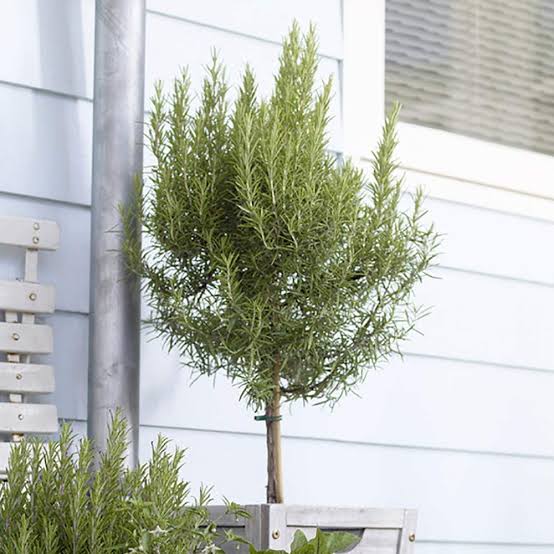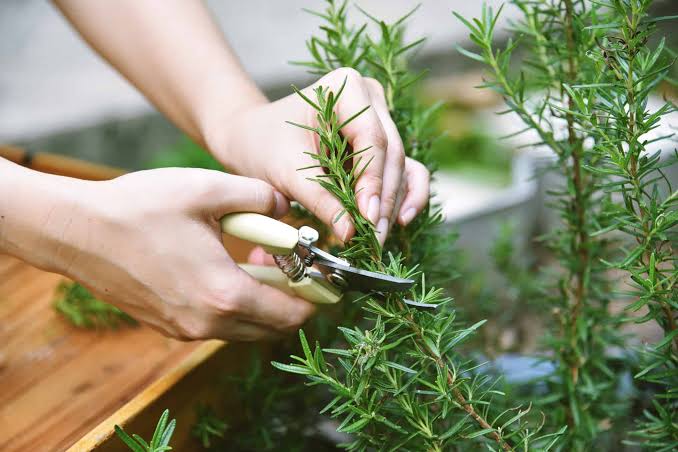Propagating rosemary is a wonderful way to grow more of this fragrant and flavorful herb in your garden. Rosemary is a popular herb known for its aromatic leaves that add a delightful taste to various dishes. Whether you are an experienced gardener or just starting out, propagating rosemary can be a rewarding and straightforward process.
To propagate rosemary, you can choose from several methods, including stem cuttings, layering, or seeds. Each method has its advantages and can be easily done with minimal equipment.
Stem cuttings are a commonly used method to propagate rosemary. Here’s how you can do it yourself:
1. Select the Right Time: The best time to take stem cuttings is during the spring or early summer when the plant is actively growing.
2. Choose Healthy Branches: Look for healthy, non-flowering branches on your rosemary plant. These branches are more likely to root successfully.
3. Prepare the Cuttings: Cut a 4-6 inch section of a branch just below a leaf node. Remove the leaves from the lower part of the cutting, leaving a few leaves at the top.
4. Rooting Medium: Use a well-draining rooting medium, such as a mixture of perlite and potting soil. Moisten it slightly.
5. Plant the Cuttings: Insert the cut end of the stem into the rooting medium, making sure it’s buried about an inch deep. Water the cuttings lightly.
6. Provide Adequate Light: Place the cuttings in a bright, indirect light location. Avoid direct sunlight, which can scorch the delicate cuttings.
7. Maintain Moisture: Keep the rooting medium consistently moist but not soggy. Use a misting bottle to provide humidity around the cuttings.
8. Root Development: In a few weeks to a couple of months, you should notice roots forming. Once the roots are a few inches long, you can transplant the new rosemary plants into larger pots or your garden.
Another method to propagate rosemary is through layering, below are the steps involved:
1. Select a Low Branch: Choose a low-hanging branch on your rosemary plant.
2. Prepare the Branch: Gently wound the selected branch by removing a small section of bark. This encourages root formation.
3. Soil and Enclosure: Dig a small trench where the wounded part of the branch will be buried. Bury the wounded section in the trench, leaving the tip of the branch exposed. Cover the buried section with soil and secure it in place with a small stone or wire.
4. Maintain Moisture: Keep the soil around the buried branch consistently moist. In a few months, roots should form. Once they are well-established, you can cut the rooted branch from the parent plant and transplant it.
Lastly, if you prefer starting from seeds, follow these steps:
1. Seed Collection: Collect rosemary seeds from your existing plant or purchase them from a reputable source.
2. Seed Trays: Fill seed trays or small pots with a well-draining potting mix.
3. Sowing Seeds: Sprinkle the rosemary seeds evenly on the surface of the soil.
4. Light Covering: Cover the seeds with a thin layer of soil and water gently.
5. Germination: Place the trays or pots in a warm, well-lit area. Rosemary seeds usually take around 2-3 weeks to germinate.
6. Transplant: Once the seedlings have grown a few inches tall and have a couple of sets of true leaves, you can transplant them into larger pots or your garden.
However, propagating rosemary is a gratifying process that allows you to enjoy the beauty and flavor of this herb in abundance. Whether you choose stem cuttings, layering, or seeds, with a little care and patience, you can successfully propagate and cultivate rosemary plants that will thrive in your garden for years to come.
Read Also: Significance And Uses of Sage Flower
Rosemary Tree

A Rosemary tree, also known as a Rosemary topiary, is a lovely plant that looks like a small tree but is actually a special type of rosemary plant. It is a delightful addition to any garden or even as a potted plant in your home.
Imagine a small tree with delicate, needle-like leaves that release a delightful fragrance when touched. That’s a Rosemary tree for you! Its scientific name is Rosmarinus officinalis, but you can simply call it a Rosemary tree. These trees can grow up to 3 feet tall or even taller if you let them. Their leaves are a deep green color, and they produce small, lavender-blue flowers that not only look pretty but also attract pollinators like bees.
Caring for Your Rosemary Tree
Caring for a Rosemary tree is not as tricky as it might seem. Here are some simple steps to keep your Rosemary tree happy:
1. Location: Place your Rosemary tree in a sunny spot. It loves sunlight, at least 6-8 hours a day.
2. Soil: Well-draining soil is crucial for Rosemary trees. They don’t like their roots to stay soggy. You can add some sand or perlite to your soil to improve drainage.
3. Watering: Rosemary trees prefer to dry out between watering. Water deeply when the top inch of soil feels dry, but don’t let it sit in standing water.
4. Pruning: To maintain its tree-like shape, prune your Rosemary tree occasionally. Trim the top and sides to encourage upward growth.
5. Fertilizing: Feed your Rosemary tree with a balanced liquid fertilizer during the growing season (spring and summer).
6. Protection: If you live in a region with cold winters, consider bringing your Rosemary tree indoors or providing protection to prevent frost damage.
Creative Uses for Rosemary Trees
Besides being a charming addition to your garden, Rosemary trees have several creative uses:
1. Culinary Delight: You can snip fresh Rosemary leaves to enhance the flavor of your dishes. It’s especially popular in Mediterranean cuisine.
2. Aromatherapy: The fragrant leaves of the Rosemary tree can be crushed or simply touched to release their delightful aroma, which can help relax your mind.
3. Home Decor: Potted Rosemary trees make beautiful and fragrant additions to your indoor decor. They can be placed on windowsills or used as centerpieces.
4. Gifts: A potted Rosemary tree makes a thoughtful and unique gift for friends or family, especially those who enjoy cooking or gardening.
5. Natural Pest Repellent: Rosemary is known to repel certain pests. Placing Rosemary trees around your garden can help protect your other plants.
In addition, a Rosemary tree is a charming and versatile plant that can bring beauty, fragrance, and flavor to your garden and home. With simple care, it can thrive and provide you with years of enjoyment. So, consider adding a Rosemary tree to your green space, and you’ll have a delightful addition that’s both visually appealing and useful in various ways.
Read Also: Antirrhinum Flowers: All You Need To Know About
Rosemary Leaves

Rosemary leaves are the fragrant and flavorful foliage of the Rosemary plant (Rosmarinus officinalis). These leaves are an essential component of this aromatic herb, and they are widely used in culinary, medicinal, and aromatic applications. Here’s some simple information about Rosemary leaves:
1. Aroma and Flavor: Rosemary leaves have a distinct and delightful fragrance characterized by a piney, woody aroma with hints of lemon and camphor. This aromatic quality is what makes Rosemary a popular herb in cooking and aromatherapy.
2. Uses: Rosemary leaves are used to flavor a variety of dishes, particularly in Mediterranean and European cuisines. They pair well with roasted meats, poultry, vegetables, and even bread. Just a few chopped Rosemary leaves can impart a rich and savory flavor to your meals.
3. Medicinal Benefits: Rosemary has a history of being used in traditional medicine for its potential health benefits. Some people believe that Rosemary leaves, when brewed into tea or used in essential oils, can help with digestion, memory, and circulation.
4. Aromatic Properties: The aromatic nature of Rosemary leaves makes them a popular choice for infusions and potpourri. Dried Rosemary leaves can be used to make fragrant sachets or added to homemade cleaning products for a fresh scent.
5. Both Fresh and Dried: Both fresh and dried Rosemary leaves are commonly used. Fresh leaves have a more intense flavor but can be a bit tough, so they are often minced or chopped before use. Dried Rosemary leaves are milder in flavor but more convenient for long-term storage.
6. Harvesting: If you’re growing Rosemary in your garden, you can harvest the leaves as needed. Simply snip the stems and collect the leaves. Regular pruning can also help keep your Rosemary plant healthy.
7. Storage: Fresh Rosemary leaves can be stored in the refrigerator for a short period. To preserve Rosemary leaves for a more extended time, you can dry them by hanging bunches upside down or using a dehydrator. Store dried leaves in an airtight container.
8. Other Uses: Rosemary leaves have also been used in cosmetics and hair care products for their potential skin and hair benefits. They are sometimes added to shampoos and skincare products.
In summary, Rosemary leaves are prized for their delightful aroma and culinary versatility. Whether you’re adding them to your favorite dishes, using them for their potential health benefits, or simply enjoying their fragrance, Rosemary leaves are a versatile and aromatic herb that can enhance various aspects of your life.
Read Also: Unlocking the Potential of E-Waste Recycling Business Ideas

